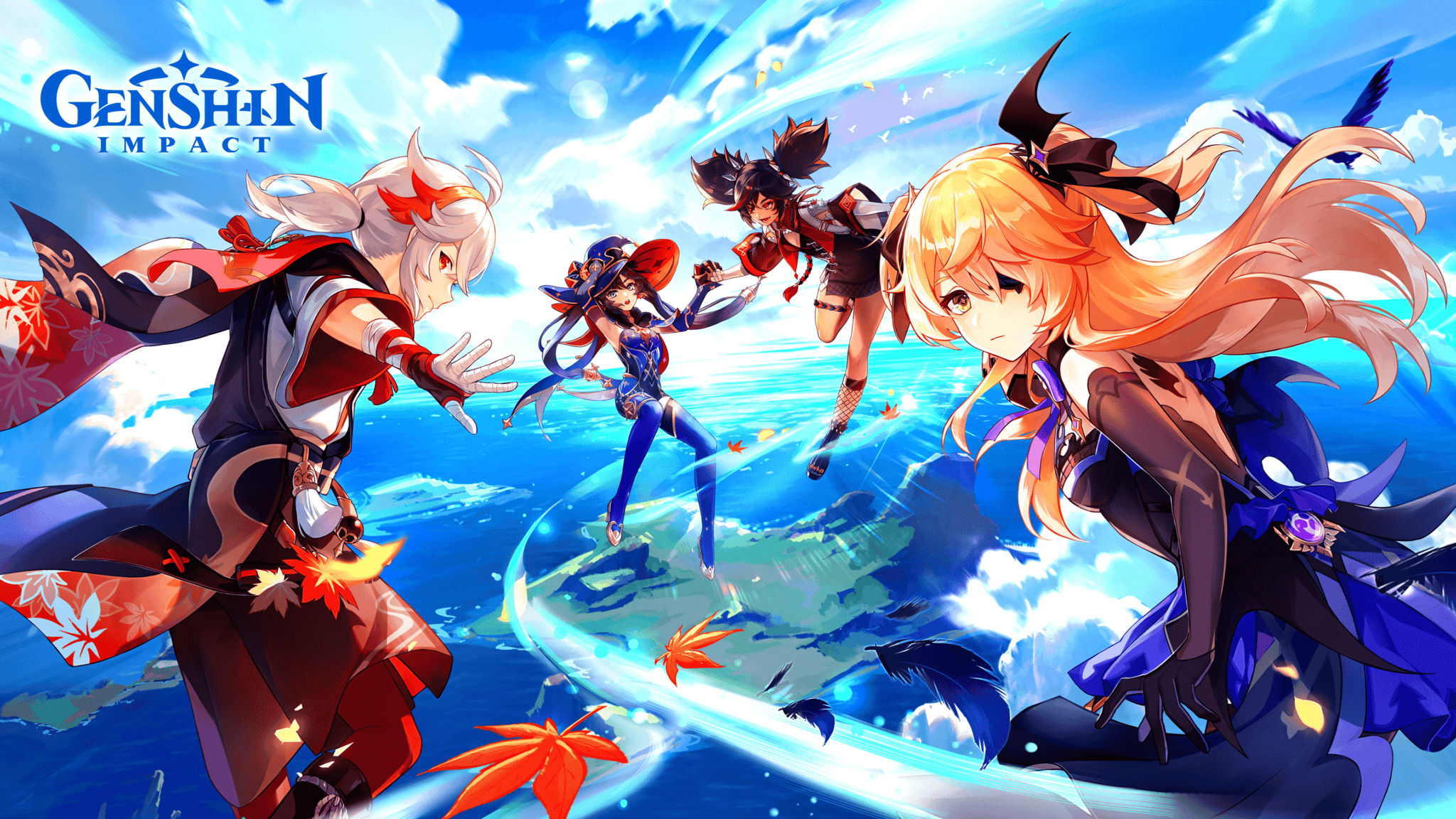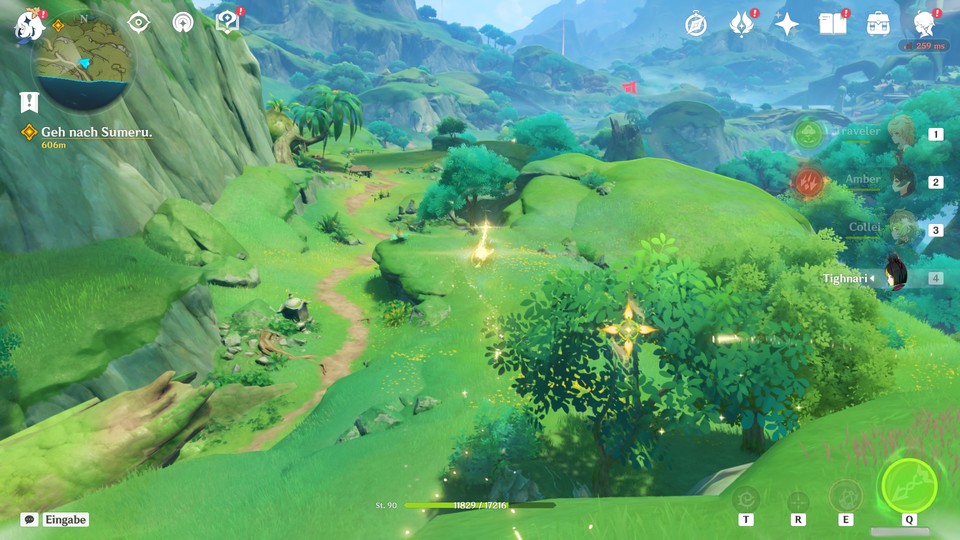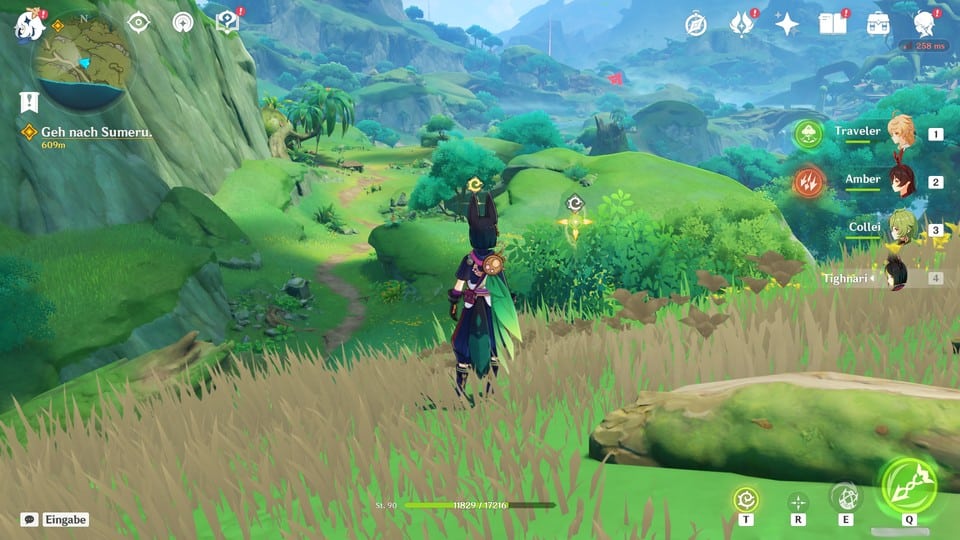Genshin Impact expands the game with Patch 3.0 to include the new region Sumeru. We clarify what has changed since 2020 in the post-test.
Two years after release, Genshin Impact is no longer the game it was in the beginning. Regular updates have made the world of the online role-playing game, which is successful worldwide with over 60 million players, grow bigger and bigger. New functions were added, new activities, achievements, rewards and heroes.
Now, with Patch 3.0, the next major content expansion has been released. We take this as an opportunity to take another look at the game and answer the question of whether Genshin Impact 2022 has become a better game.
Table of Contents
More of the same
Comparing the gameplay of Genshin Impact 1.0 with 3.0, you”ll notice that while there are more variations, the system has remained true to itself at its core. You set up a team of up to four characters, making sure as much as possible that elementary effects complement each other, and set off. In battle, you switch back and forth between your characters in a flash, attacking enemies with different skill types, which then receive different status effects. For example, if you hit an enemy with water and then with ice, he will freeze for a moment.
With Patch 3.0, there are now a total of 52 characters to choose from. All of them vary in their usefulness and strength, so you can build an incredible number of team combinations, which gives you a lot of freedom for your personal play style.
To get new characters, you have to get lucky and draw the character during the character pools, called “banners”, which change every few weeks. This is also 2022 one of the most controversial points about Genshin Impact. This is because, much like a lootbox, you can buy new characters through so-called prayers, which you can get to by spending real money or tediously grinding.
All in all, it can take a depressingly long time before you can add new characters to your selection. This is because each hero is only available for a few weeks and it is then left to chance whether you draw a character at all. Although you will get a guaranteed 5-star character from such a banner after a maximum of 90 moves (or a 4-star character after a maximum of ten moves), this does not automatically have to be the character you wanted. Only after a maximum of 160 moves do you have a 100 percent chance of getting exactly the 5-star character that is on the cover of the current banner. So if you don”t manage to pull the 5-star character before the banner expires, you often have to wait a very long time for it to make it back into the banner.
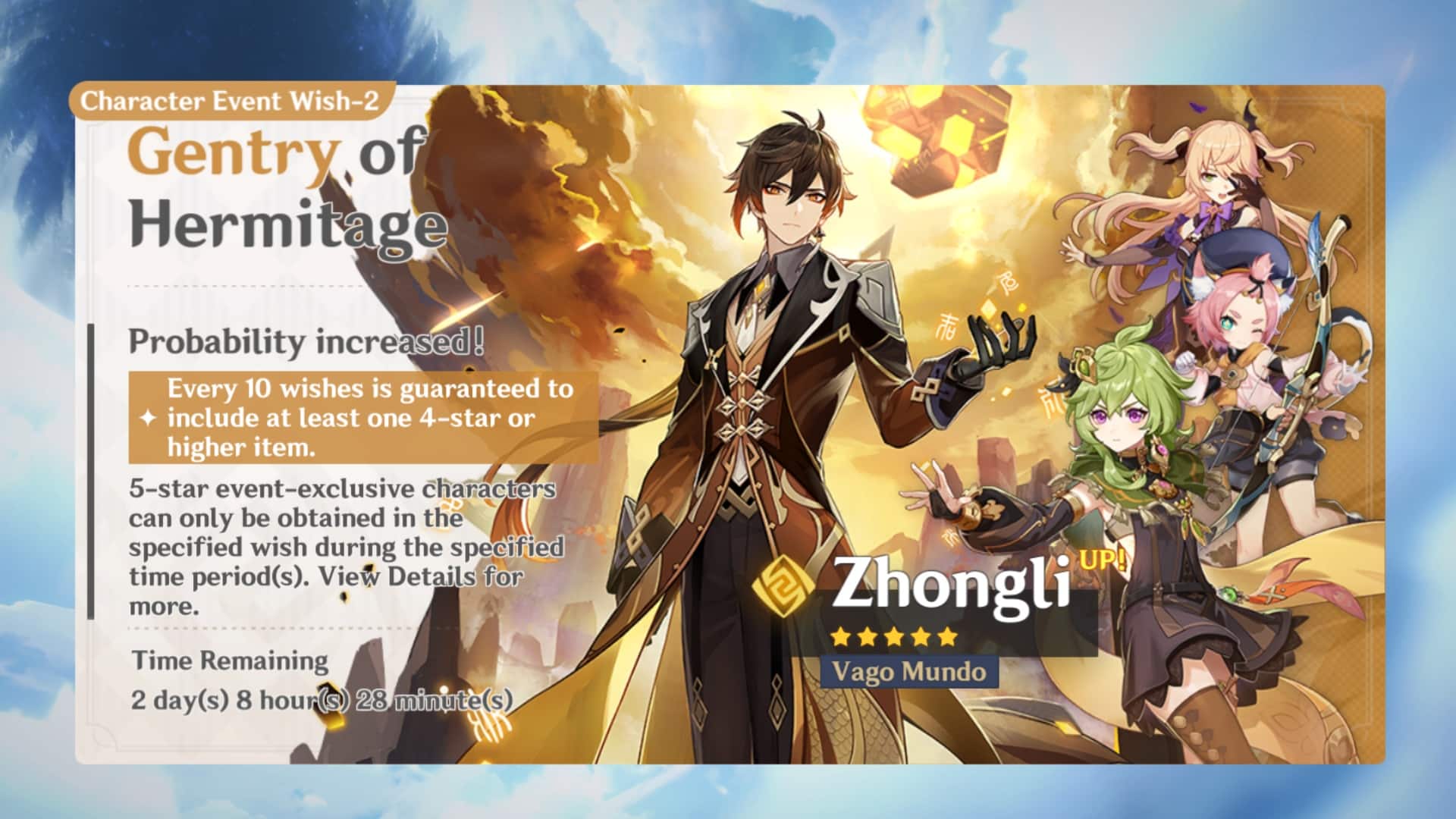
(The last time you could pull Zhongli was in January 2022. Now there is a rerun.)
Fortunately, you can also progress with the existing characters if you level them up enough. In doing so, both the weapon and equipment as well as the character itself can be built up independently. While grinding, questing, virtually every activity in Genshin Impact, you will receive experience vouchers that you spend to buy levels for the characters.
You can refine or level up weapons and equipment. When refining, you melt down a weapon that is the same as the one you want to improve. This will make the weapon”s effect stronger. When levelling, you can melt down any equipment and weapons to increase the damage or, in the case of equipment, the status values.
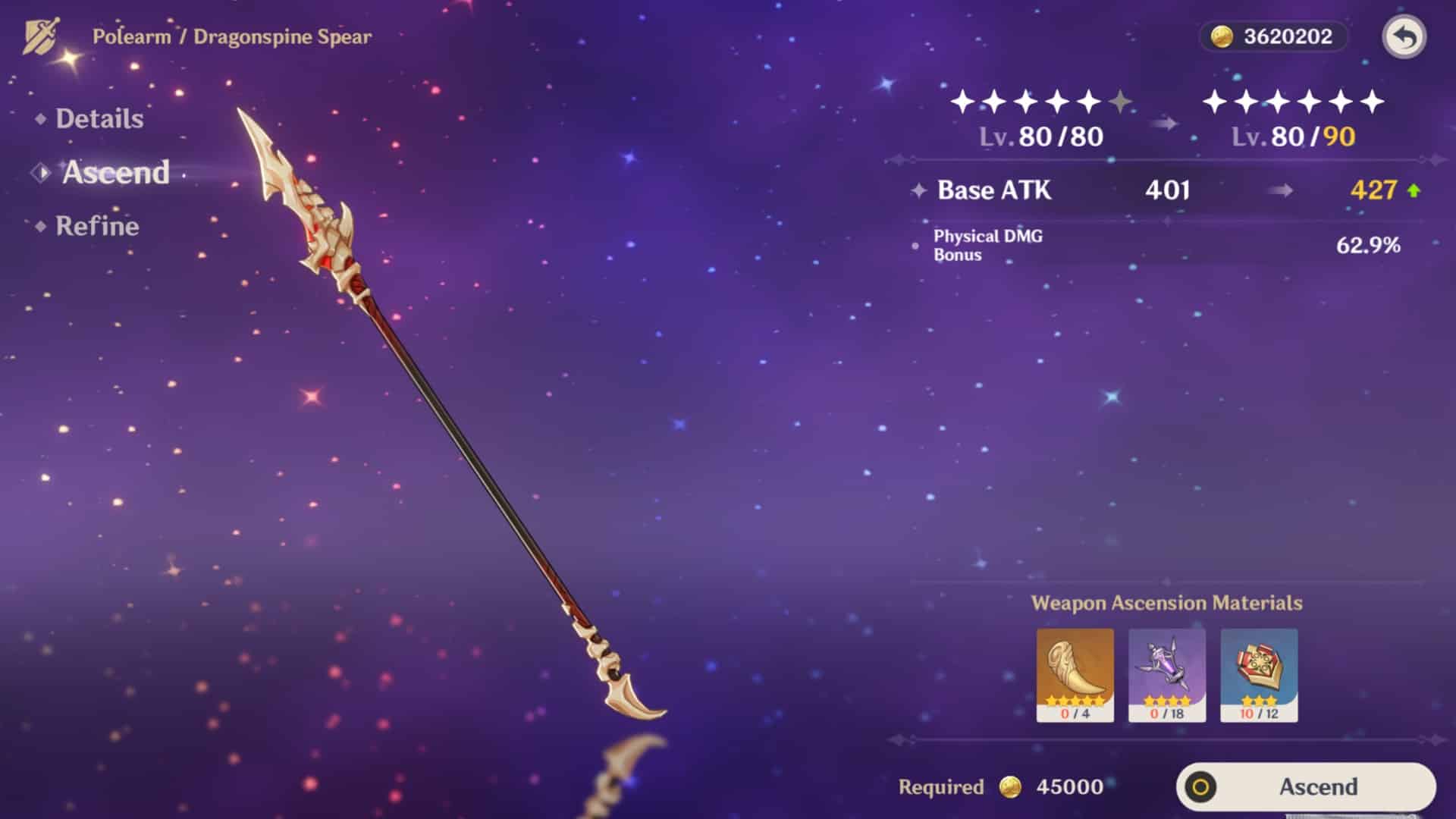
In its mechanics, Genshin Impact is still the same game it was two years ago. Changes are barely noticeable, if at all. All patches since 1.0 have only contributed content that fits into the existing concept of the game mechanics without breaking it. This makes the gameplay consistent even for returnees, as you don”t have to learn anything new. On the other hand, the game does not offer any revolutionary innovations that could intensify or improve the game experience. The motto here is clearly “more of the same”.
Almost infinite expanses
Green hills in front of towering mountains, picturesque lakes and rivers nestled in deep gorges or forests bursting with life: No matter where you look, Teyvat is beautifully and breathtakingly designed. The graphic style of The Legend of Zelda: Breath of the Wild and the anime inhabitants conjure up a unique world. Villages, towns and ruins nestle almost naturally into the landscape, as if they had grown in their places and not been placed there by man.
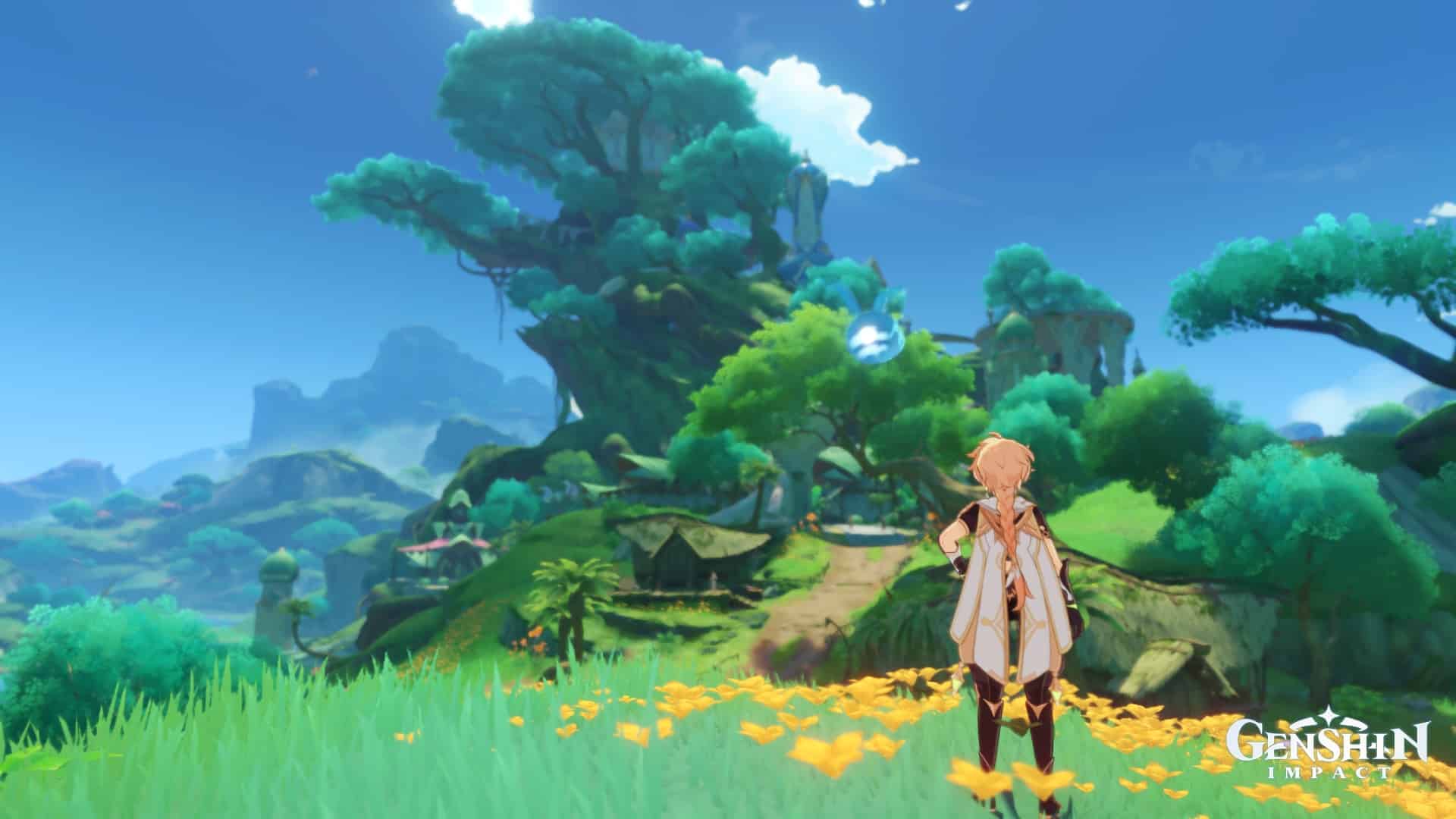
However, in the world of Teyvat, the areas clearly differ from each other with their very own style. Moon City dominates with a touch of European medieval fantasy and wide plains where the wind can reach far.
In Liyue, the domain of the Geo ruler awaits us. Geo stands for earth, ore and stone, and there are plenty of them in the Chinese-looking region. High mountains enclosing a deep, burgeoning valley, a sprawling river that merges into a vast marshland by the sea and ends at the region”s capital: the port of Liyue.
Inazuma is one of the two new areas that have been added within the last year. The state stretches over several islands in the sea, southeast of Liyue. Inazuma has the largest area, but the smallest land mass, and is reminiscent of a feudal fantasy Japan, but shattered by storms and local unrest.
The newest region is Sumeru and was only recently added with patch 3.0. Here you travel through a rainforest with a wide river running through it. Mysterious caves, hidden gorges, machines of an ancient time and last but not least the small spirits of the forest, the Aranara, can be found here. Sumeru is also the name of the capital, which lies in a massive tree that can be seen from afar.
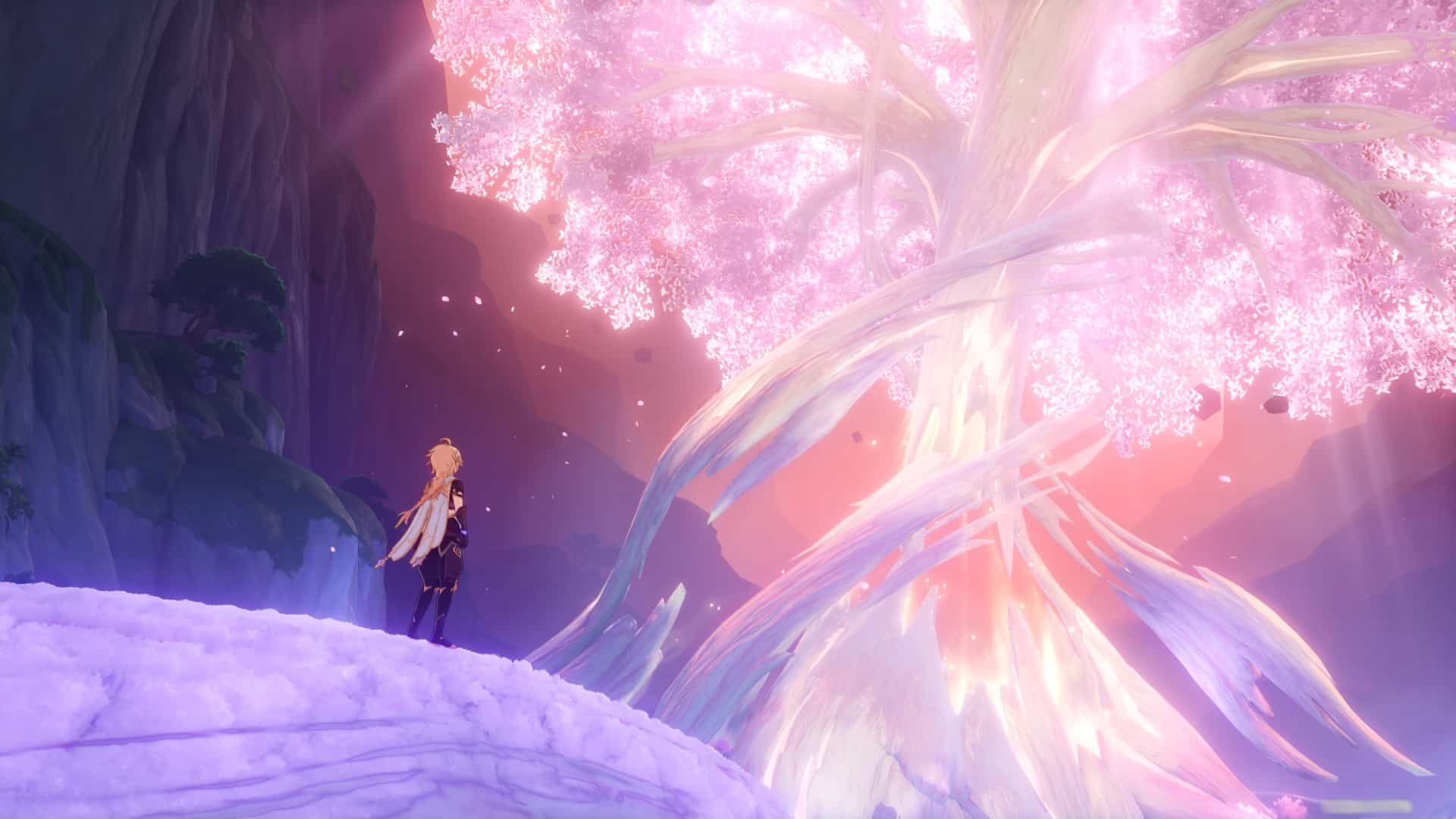
In short: Teyvat is big! So big, in fact, that if you wanted to travel across from Moon City to Sumeru, you”d be right to get your feet wet. Fortunately, the developers have taken precautions and equipped you with more or less fast means of transport in addition to fast travel points, some of which you can only use locally or by unlocking them.
In the newest regions, there is also a special way to travel, in addition to a small boat (which you may already know from Inazuma): In Inazuma it”s electric spheres and in Sumeru it”s four-leaves. Both float in the air and often several of them are set up to follow a kind of path. If you do it right, you can use them to reach long distances and even remote places within a few moments, or even solve smaller puzzles. This loosens up the sometimes dull exploration and puzzle passages a little.
“One more to go…” Of treasures, riddles and the grind
Speaking of riddles: No matter which way you run, you”re bound to stumble across something that piques your curiosity and invites a little swerve from the actual path.
Before you know it, you”ll want to “just unlock that one chest there” or “just guide that one ghost back to its pedestal”. You can travel, hike or climb to any point in Teyvat. And everywhere there is something that is waiting for you and wants to be done.
These activities vary. For example, there are simple chests that are protected by monsters. Then again, you solve small element switch puzzles or complete challenges in which you have to complete tasks under time pressure. At the other end of the scale, there are flying courses where you have to prove your skill with the gliding wings. Especially in Inazuma and Sumeru, there are exciting and varied things to do that will quickly make you forget the time.
Although many tasks are relatively simple and often repetitive, Genshin Impact shows in an exemplary way how to fill an open world in a meaningful way. In addition to the forest and meadow puzzles, however, you will also repeatedly find the so-called spheres. These are one-room instances that you can find in several places in Teyvat and that offer you a combat challenge. If you defeat all the enemies, you can pick up a pile of loot. Since patch 1.0, the number of spheres has increased, and so have the challenges and rewards. They now change daily, making it much easier to hunt for the items you need.
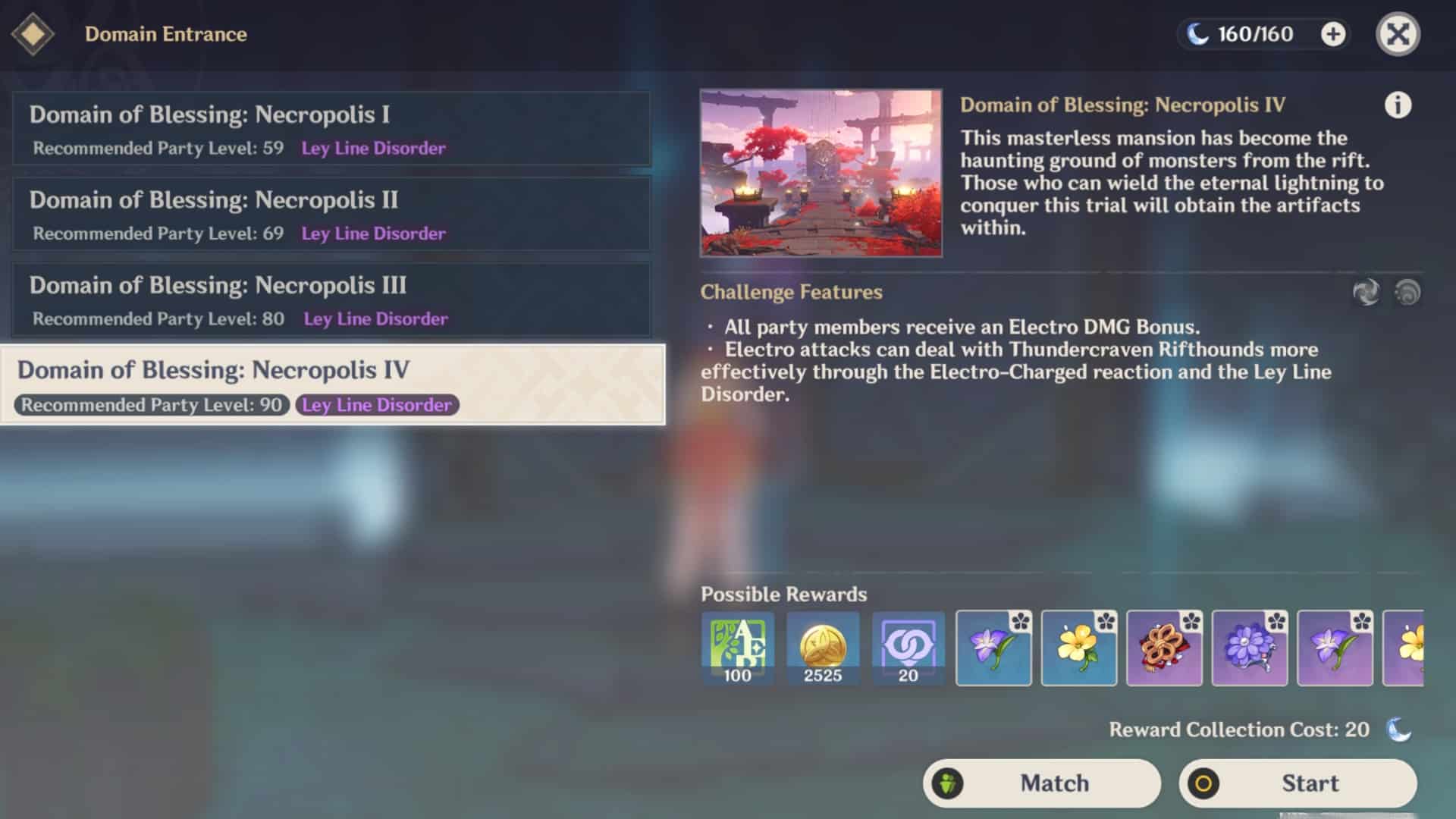
Despite all the variety and the sheer mass of in-game activities, however, Genshin Impact falls into the same trap as many other free-to-play games: The grind, i.e. the repetition of the same tasks to earn rare equipment, eventually becomes a dull ordeal. For example, to level up your characters, you need lots of special items that you either find in the world or that might (!) be dropped by bosses or run-of-the-mill enemies.
Between text wasteland and gaps: What was that again?
As beautiful as the game is visually, it struggles to tell its story. The journey of the traveller(s) is told mainly in the main missions and is divided into several acts. However, while grind and exploration are quick off the mark, the story of each area and the characters that appear is heavy handed.
Often concepts and explanations are brought in and conveyed with a wall of text. Only now and then are there interludes that resemble a storybook and try to explain backgrounds to you as a bedtime story. The plot is not even uninteresting, but it is predictable and long-winded. In principle, this is not a bad thing. However, it makes it all the more difficult to build any kind of emotional connection to the characters and their world. Between textual deserts and predictability, it”s just not a good ride.
The makers of Genshin Impact show that it can be done differently in the legend orders. These are focused on a character and deal with events from his or her past. Since you are part of this narrative yourself, learn more about the heroes” nature and experience their fate, this is immediately much more immersive than the area quests.
In the meantime, there are also events in Genshin Impact, and of course these are not without quests. For a short period of time, you can complete themed world quests for an event and earn unique rewards. That sounds quite nice at first. The only problem is that parts of the story or the world are explained within these events, which are later referred to again within the main and side stories. This leaves those who have not played these events with gaps in their knowledge and huge question marks.
We asked the developers about the future of the story and the event issue. These were their answers:
(GlobalESportNews): Like in Final Fantasy 14, is there a clear idea of the end of the (current) story? With what approach will the story be planned in upcoming patches and updates?
(Mihoyo): We actually already have a rough plan for the overall world of Teyvat and the main storylines and will develop the story according to this long-term superstructure. An idea of the direction of the future story can be found, for example, in the two (English) videos Teyvat: Main plot preview “Footprints” from the original launch and Teyvat: Interact preview video “Magic trick in the winter night”, which we put online before the release of version 3.0.
(GlobalESportNews): Currently, events and their stories are unique, so new players can”t relive them and sometimes don”t understand allusions in the course of the story/other events. How do you want to solve this problem?
(Mihoyo): Aside from the constant Archon, World, and Legend quests and most of the landscapes, there are timed version events where players can experience more details and changes in the lives of Genshin Impact characters for a time. However, missing out on such version actions does not prevent you from progressing your own development and understanding the world and central storylines.
Still, we are thinking about how we can make the version content available to more people. For example, since the “Zephyr of the Purple Garden” action in version 2.6, we have introduced a “quick start” button for individual actions so that players can experience them more easily without being forced to complete previous orders.
Want more side action?
Genshin Impact offers many more possibilities to fill your gaming day besides story, quests and lootboxes. None of them claims to reinvent the wheel. But they all invite you to try them out. They rarely serve a purpose like hunting down primal rocks through grind. They are rather the expression of one”s own personality and one”s own way of playing the game.
First of all, there is Housing. Housing takes place through a portable pocket dimension that you sort of carry around with you in a tea kettle, the “Pot of Impermanence”. There you can change the landscape, craft items and then place them. You can have up to eight of your characters move in there. However, this depends on your friendship with the characters. You can even visit a friend”s teapot via co-op.
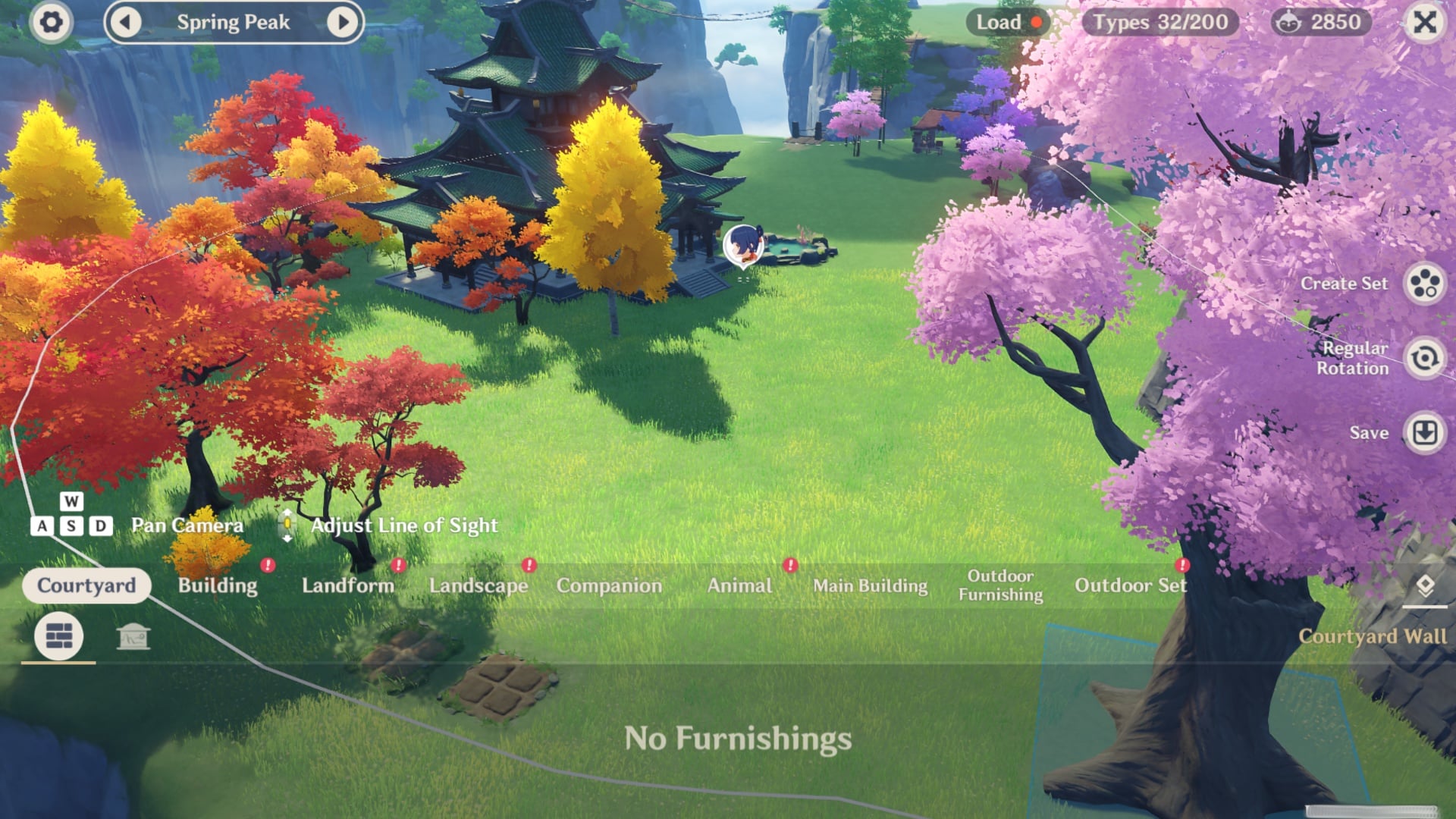
Which brings us to co-op. Co-op is basically more of a way to grind together in the open world or in spheres. Some high value and difficult challenges become doable for you through this. Co-op is limited to two players. However, joint questing is hardly possible, because only the host can take and hand in orders. The guest can at most support you in combat encounters.
With the “Net of Omniubiquity” (yes, that”s really what it”s called!) you replace your elemental ability and can catch animals in the open world. You can then release them into your teapot, adding more to the homeliness of your own little piece of Teyvat.
No game is complete without a fishing simulation, and that”s the case here too. Once you have your teapot, you can start fishing. This involves crafting your bait, grabbing your rod and then setting off in any body of water that has a shimmering circle where you can see fish near the surface.
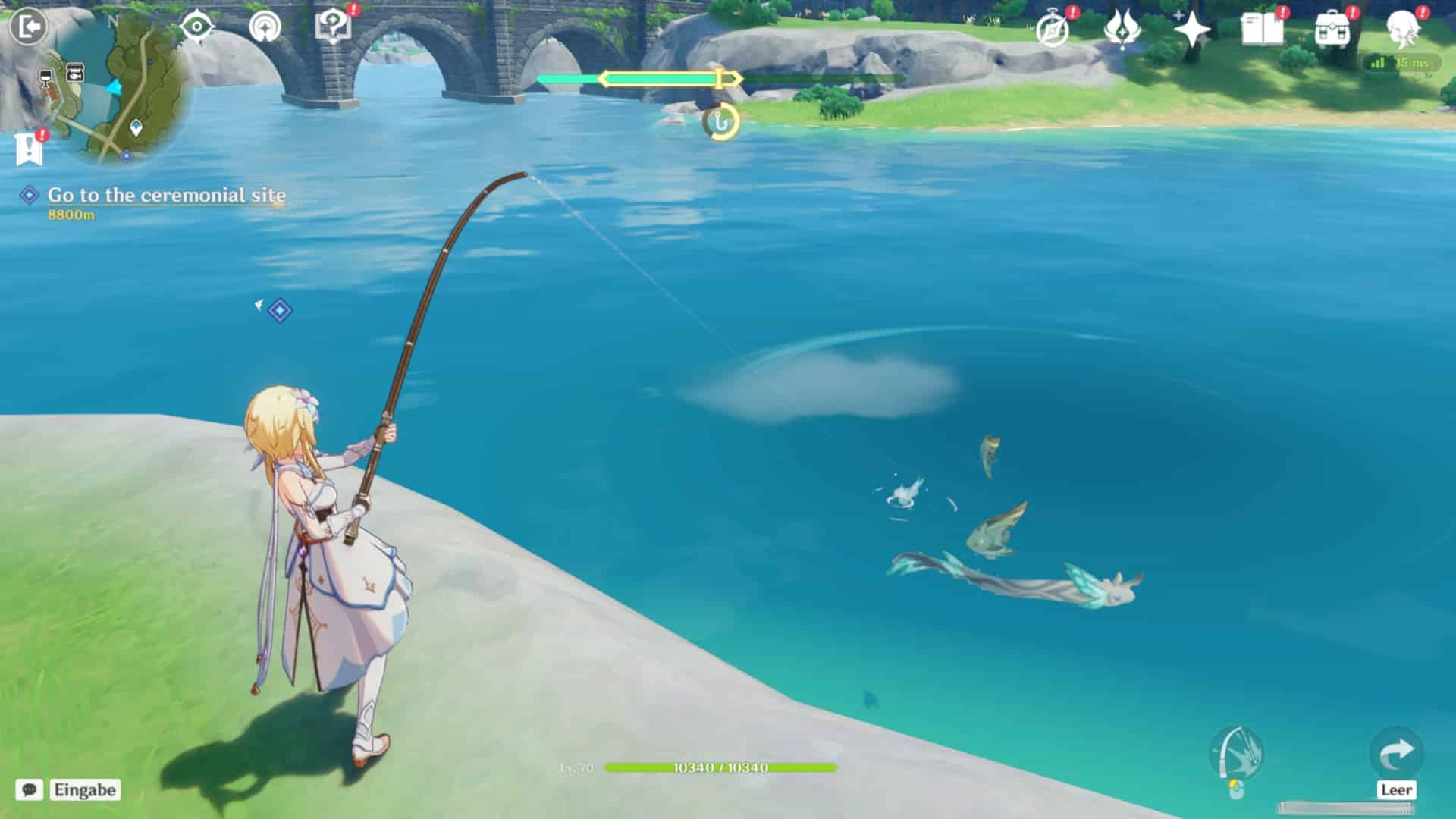
Has Genshin gotten better since 2020?
Two years later, Genshin Impact has definitely grown. Four areas waiting to be explored over hundreds of hours of play The game remains true to itself and its nature. Returners won”t experience any major changes in gameplay when they roam Teyvat again, while newcomers will probably feel overwhelmed by all the tasks and possibilities that keep growing every few weeks.
For the dedicated grinder and collector, there is enough variety and the game is light-hearted enough to give you plenty of choice of activities with more or less useful rewards. But even after-work players without big grind ambitions will be happy here.
If you get involved in the game, you will always find something to do and be entertained. And be it to do the four daily quests, cook something and log out again. One has the impression of having achieved something. However, given the mountain of necessary grind, the size of the world and the length of the stories and quests, this feeling loses meaning because there is virtually never an end in sight. But that, too, is a form of permanence.
Editor”s Verdict
Genshin Impact is still the ideal after-work game for me. Log in, do a few dailies, run a sphere or two, enjoy the loot and log out again. Teyvat has more to offer than that. Quests lead you through the respective areas, bring you closer to the later heroes of the ensemble and give you another reason to go in a certain direction other than: “Hey there”s something flashing up ahead!”. But I keep noticing that the story doesn”t really captivate me. It”s “there” and in itself that fits the style of the game very well. It wants to suggest what you could do. It wants to be non-committal. You can do one type of activity one day, another day another and ultimately you always get something useful out of it like experience vouchers, gold, materials to level up and so on.
But exactly the same non-commitment makes it difficult for me to shimmy along quests. The offer to do a quest is more stressful for me than just stepping outside the door and doing the first thing that”s waiting for me there. And that”s a problem, because I would like to know more about the world and the fate of the protagonist twins. I want the beautiful areas to be filled with a great story that sweeps along. But until that happens, I”ll keep waiting, logging in and doing some simple activities.

